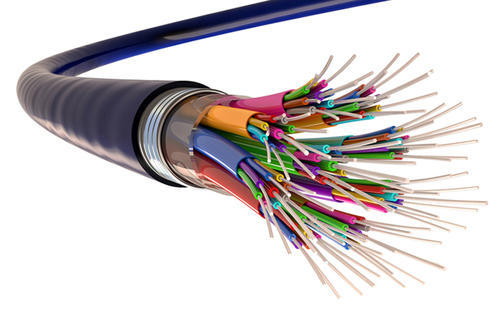Project Report For Fibre Optic Cable Manufacturing
Introduction
Project report for Fibre Optic Cable Manufacturing is as follows.
A fibre optic cable is a kind of network cable that is made up of strands of glass fibres that are enclosed in an insulated casing.
They are optimised for long-distance data networking and telephony. In comparison to conventional lines, fibre optic cables provide more capacity and the ability to send data across greater distances. Fibre optic cables are used to connect a large portion of the world’s internet, cable television, and telephone networks.
Project Report Sample On Fibre
Optic Cable Manufacturing
Get Completely Custom Bankable Project Report
A fibre optic cable is made up of one or more glass strands that are slightly thicker than a human hair apiece. Each strand has a core in its centre, which serves as a channel for light to travel. The core is encased by a layer of glass called cladding, which reflects light inward, preventing signal loss and allowing light to travel through cable bends.
Single-mode and multimode optical fibre cables are the two basic varieties. Single-mode fibre optic cables create light using very thin glass strands and a laser, while multimode optical fibre cables utilise LEDs.

Fibre optics provide more capacity. A fibre cable’s bandwidth capacity easily surpasses that of a copper cable of the same thickness. Fibre optic connections with a data transfer rate of 10 Gbps, 40 Gbps, or 100 Gbps are commonplace.
Because light can travel considerably greater distances without losing its intensity through a fibre line, the requirement for signal boosters is reduced.
A fibre optic line is less prone to interfering signals. Shielding is required on copper network cables to protect them from electromagnetic interference.
While this shielding is beneficial, it is insufficient to avoid interference when several wires are tied together in close proximity. Fibre optic cables’ physical features eliminate the majority of these issues.
Market Potential Of Fibre Optic Cable Manufacturing
Expenses

Product Cost Breakup

Reveneue Vs Expenses

Market Trend

The worldwide fibre optic cable market was worth USD 9,236.7 million in 2020 and is predicted to reach USD 20,832.9 million by 2027, growing at a 14.6 percent compound annual growth rate (CAGR) between 2021 and 2027.
Increased internet penetration, along with a growth in the use of fibre to the home (FTTH) connection, is the primary driver of the fibre optic cables industry. Fibre remains the optimal medium for transporting massive amounts of data and information across long distances.
Due to the fact that fibre optic cables are capable of transmitting massive amounts of data at a rapid rate, Internet service providers are a significant consumer of fibre optic cables. Users will notice a significant reduction in the time required to transmit files and information across networks.
As a result, the rising penetration of IT enterprises, along with improved internet dependability, is likely to drive market development.
Increased demand for fibre optic cable is also likely to benefit the market. Fibre optic cables’ value in transmitting cable signals has improved dramatically during the previous decade. Due to their increased capacity and speed, these cables are suitable for delivering information in high-definition TVs.
Networking between several computers inside a building or across adjacent buildings has gotten quicker and simpler thanks to fibre optic connections. Additionally, the growing need for internet access in schools, universities, companies, and restaurants is likely to favourably impact the fibre optic cables market in the future years.
Additionally, the growing popularity of high-quality data transfers enhanced audio and video quality has had a significant influence on fibre optic cable demand.
Additionally, increased awareness of the benefits of this technology and the worldwide adoption of 5G technology are major drivers driving the fibre optic cable market’s development. Additionally, the quick advancement of technology and many advancements in optical fibre cable are fueling the growth of the fibre optic cable market.
